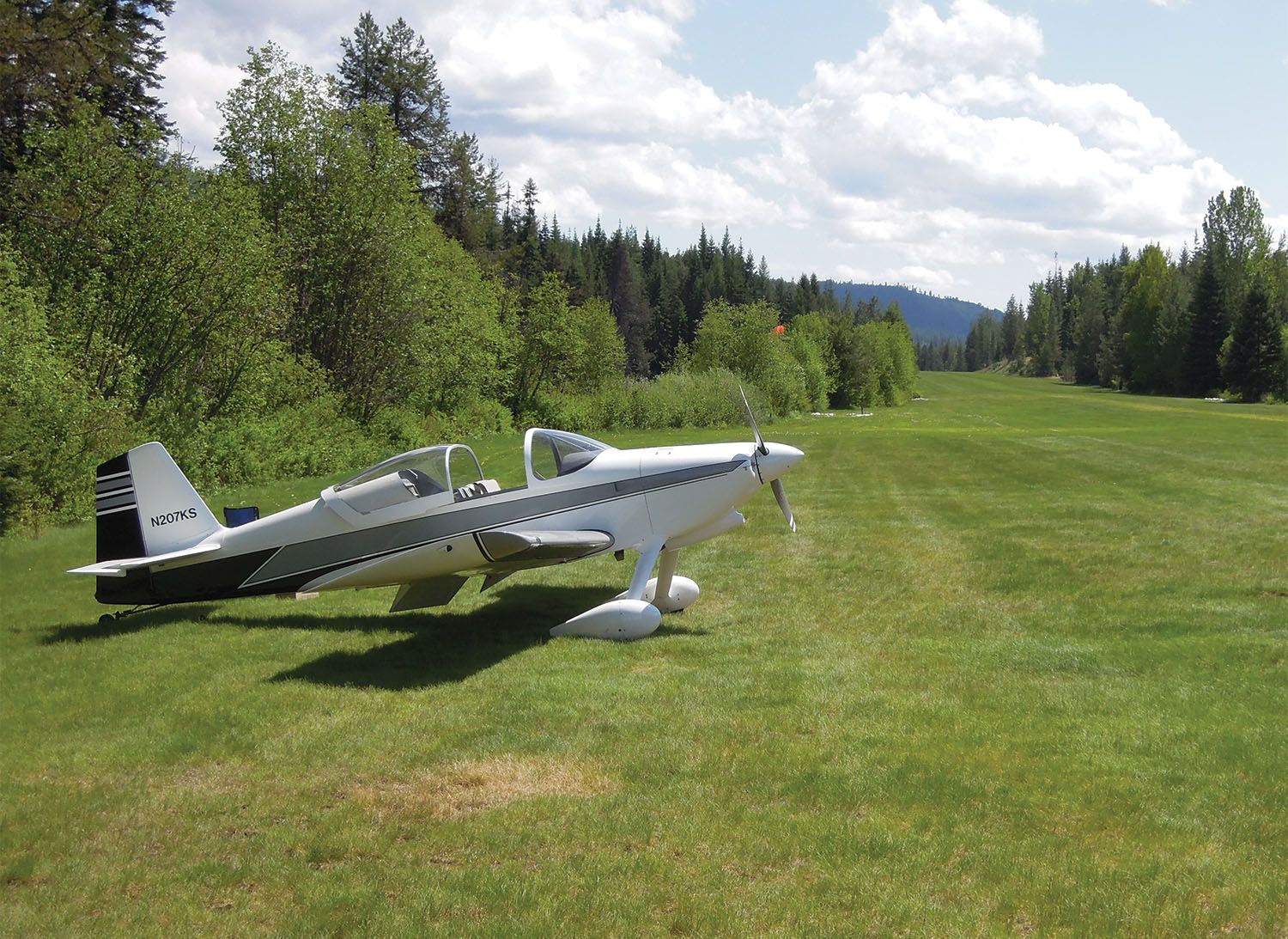
My involvement with Van’s Aircraft started in 1987—if my memory is right. The company had been going for 15 years when I got there, and it’s been going six years since I Ieft, so I had the middle years.
In 1987 I was 35, a hanger-on at EAA Chapter 105, a recovering potter too broke to build an airplane but trying to keep the dream alive. At a meeting, Dick VanGrunsven stood and announced that he was looking for someone to drive his company pickup to Oshkosh. His terms were pretty simple—you paid for meals, lodging and entry fees. He’d pay for the gas.
There was a noticeable lack of interest.
Well, I didn’t have a job worth staying home for, I’d always dreamed of going to Oshkosh and I figured that maybe, given the fact that nobody else was stepping up, I could negotiate a better deal. I approached Van after the meeting and he was receptive. We came to an agreement. He’d leave enough room in the truck for camping gear and a bicycle and pay for meals and a gate pass. I’d find a place to camp, stay for the show and drive the truck back to Oregon.
A couple weeks later I went out to the Van’s Aircraft “factory” in North Plains. It was just one building, about the size of a hangar that would house a midsize business jet. The west end housed two or three airplanes and opened onto the backyard of Van’s house, and thence to a 3000-foot residential grass airstrip. Most of the floor area was used for material storage and benches. The only “machinery” was an 8-foot power shear, a pair of stomp shears and a couple of swing brakes. The walls were festooned with cutting templates and a small crew was beavering away, cutting out parts by hand. A tiny corner was separated off for Van’s drafting board and a workspace for Art Chard, Van’s prototype builder.

Off to KOSH
I mounted up in my trusty steed—a no-frills Ford F-150 with a bench seat and a crippling driving position. There was an AM radio but no air conditioning. The bed was loaded to the top of the higher-than-cab canopy, a crated wing kit was strapped on top and the passenger seat was filled with brochures and Oshkosh paperwork. By the end of the first day (or maybe it was the second—I just remember it was brutally hot), I was pitching my tent a mile or so off the freeway in Wyoming, alongside a dirt road that led to God knows where.
Very early the next morning I was driving into a ripe-peach sunrise when I got a real jolt. Silhouetted in the middle of the freeway, a mile ahead, was a very large high-wing airplane with four radial engines. I blinked and the damn thing was still there. I’d never seen a PB4Y-2 Privateer before, but I’d read all my dad’s airplane books and there were very few WW-II airplanes that I couldn’t identify instantly, and, no mistake, that was definitely a PB4Y-2 sitting in a Wyoming freeway. It made no sense at all…until I reached it and the road swung away to the south, leaving the Privateer sitting on the runway side of the fence that separated the freeway and the Greybull airport. (Twenty-five years later that same airplane cost me good money. Van’s tech help guy Sterling Langrell and I had flown the RV-10 to Casa Grande, Arizona, for the Copperstate Fly-In and the big brute was there, looming above everything. I bet Sterling 10 cents he couldn’t identify it. “PB4Y-2,” he said instantly. Humbled, I handed over a shiny dime. I believe he still carries it in his wallet.)
Eventually, I arrived at KOSH, driving through the gate under an air cover of P-51s. When Van arrived in the RV-4, I was parked in the booth space waiting for him. I think he was relieved. For the next week I slept in the nearby campground, rode my bike into town for meals and hung out at the booth soaking up RV lore.

Hired, Fired, Hired
Fast forward two years—I’d gone back to school, earned a teaching credential, cut out a thousand or more RV-4/6 wing-rib blanks in my landlord’s garage, almost finished an RV-6 tail kit and had been resoundingly fired from my first teaching position. I ended up on Van’s doorstep, looking for a summer job. They put me to work in the production shop, which by now was in a much larger space, a converted warehouse in “downtown” North Plains. The RV-4 had established the Van’s “Total Performance” mystique, but the RV-6 really made the company. Everybody was working long hours (nobody longer than Van) to meet the demand. At the end of the summer, I hadn’t even applied for another teaching job, hoping against hope that I could find some place to fit in—and to my delight Van discovered a use for an English major.
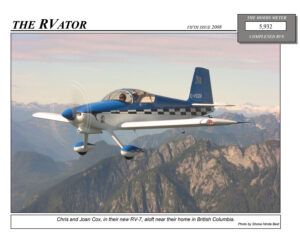
For several years Van had been writing a company newsletter he called the RVator. It was supposed to be published four times a year, but with all the demands on Van’s time it was often late. He was glad to turn it over to somebody who enjoyed writing more than he did and had at least some idea what RVs were all about. I liked the writing but I struggled with Wordstar 1.0, using up inordinate amounts of time on the company’s one and only computer.
The RV-6 begat the RV-6A and sales really took off. In about 1989 Van and I took Ole Blue, the prototype RV-6A, around the edge of America, leaving in early April for Ontario, Canada, down the East Coast to Florida for Sun ’n Fun, then across the southern U.S. to Houston before turning north across Colorado and home. We hit miserable weather on every leg. The airplane had basic VFR instruments (no attitude indicator) and a rudimentary Loran with only the West Coast chain installed. Van did all the flying and I floundered around in the right seat, awash in a sea of sectional charts, trying to get the Loran to tell us something useful and figure out where the heck we were. Not easy over country that looks the same in all directions, especially when it’s covered in still-falling snow. Neither of us will forget that trip.
We bumped the RVator up to six times a year, and getting out readable issues on time evolved into about two-thirds of my job. It’s hard to remember now, but in the antediluvian ages before the internet and VansAirForce.net, the RVator was our primary voice for communicating with the builder community and passing along what we had learned from it. The rest of my time I wrote promotional materials, composed print ads and, increasingly, tried to help with builder support and gave shop tours to customers from all over the world.
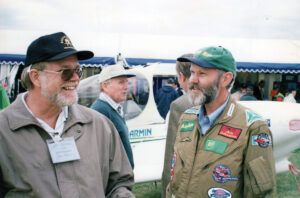
Fun Times
We had some fun along the way—Van and I composed an April Fool’s “RV-8” (long before the actual RV-8 came along). He drew up two RV-4 fuselages joined by a center section, à la F-82, and we concocted a tale about how it was designed to use the retractable gear and engines from the hundreds of moribund Apaches sitting around the edges of airports. It worked well enough that, despite a disclaimer at the end, the editor of a fairly prominent aviation publication called, begging to see the prototype. “I won’t write a word until you tell me I can,” he swore. “I just have to see it.” I listened for a minute, thinking: Have we successfully punked him, or is he messing with us? Finally, very tentatively, I said “You realize it’s a spoof, right? Check the date…” Long, long pause…“Oh, nooo…” he moaned. You had to feel for him.
Then there was the list RV-6 builder Randall Henderson left on my desk one morning: Top Ten Things You’ll Never Hear Dick VanGrunsven Say. Number three, right behind “Oh, throw it in there. It’s just a couple of pounds” was “Good idea for a new airplane, Ken.”
Finally, Van let me near the airplanes themselves. I’d bought a share in an elderly and sadly underpowered 1965 Citabria. It flew like a sprained ankle, but it and instructor Al Sauter taught me the basics of flying tailwheels. By 1993, I’d flown it 200 hours without doing any damage and amassed maybe 30 hours in the RV-6A. Van gave me an hour in the company RV-6 and the day after Christmas I made the first flight of my own RV-6. I managed to avoid hurting myself doing the flight tests, and maybe that was why Van eventually turned me loose in the company demonstrators.
By this time the company had grown to the point where we had to have more staff, so we hired a young engineer from Oregon State, Andy Hanna, to help Van with design chores. He looked around, saw Van at his drafting board with a pencil and workers in the shop with hand shears and said, “You know, guys, there’s better ways to do these things.” Van, to his credit, did not remain mired in the past and soon we were involved in the world of computer design and manufacture. We bought our first punch press and built a new building to house it. It was a miracle—the new building was often filled with office staff on their lunch hour marveling at this thing knocking out absolutely identical parts at what seemed like lightning speed.
In 1995 we came out with the RV-8, and we knew from the moment it touched down at Oshkosh we were in for a wild ride.
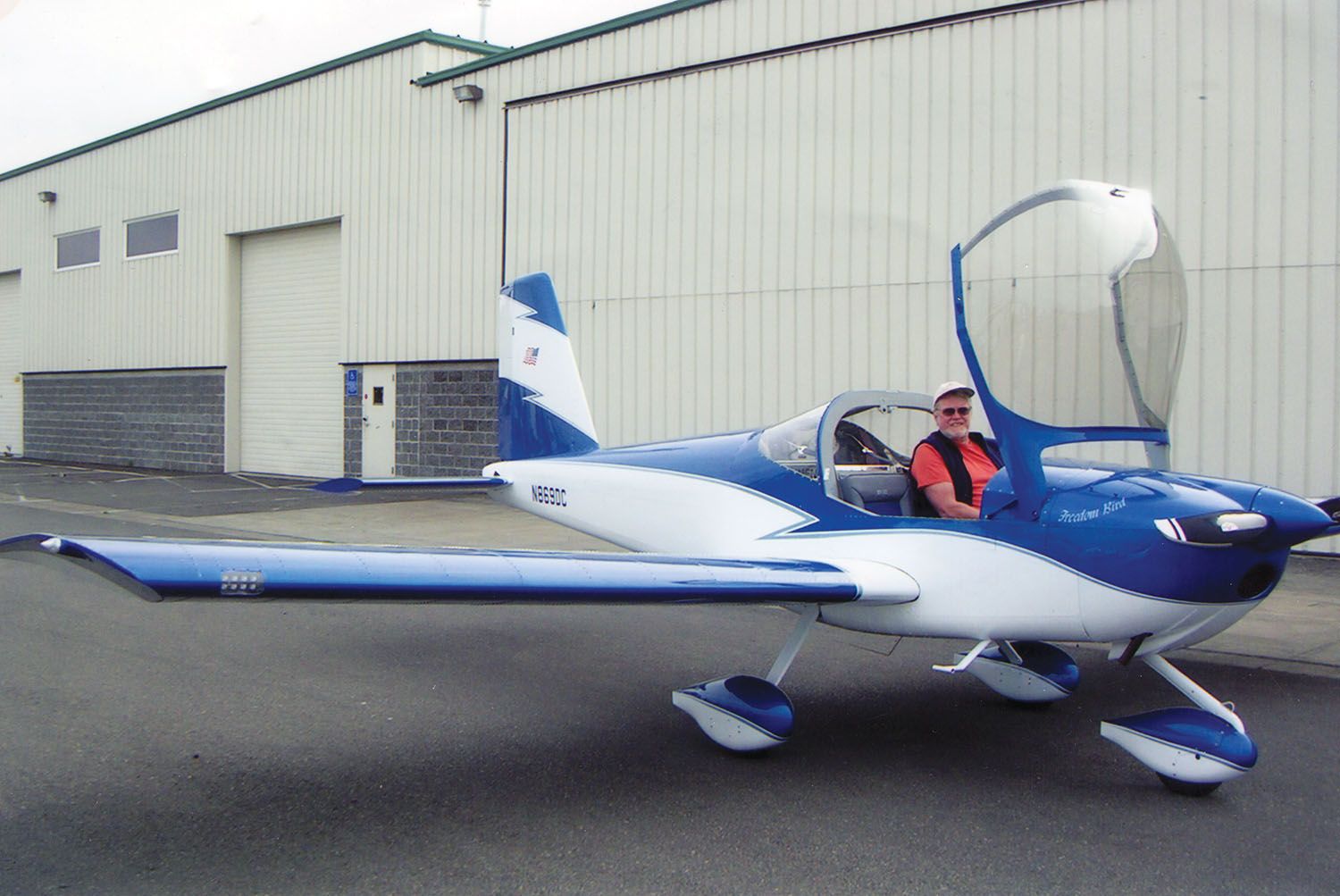
Thousands Served
Somewhere in there, I wrote the press release celebrating 1000 flying RVs. (Later, I wrote releases for 2000, 3000, 4000…) I also became the second person in the world to fly an RV-9A, an airplane I still regard as one of Van’s best.
The years went by pretty quickly then. The company completely outgrew expansion opportunities in North Plains and moved to a brand-new building on the Aurora State Airport. The RV-7 came out (second person to fly that, too. Always a bridesmaid…) and things went really nuts. The RV-10 added to the fun.
For years Van, who retained an interest in low-powered, low-cost airplanes, kept a little lime-green model on his desk. Carved from a chunk of 2×4, it showed a tri-gear side-by-side airplane with the cockpit well forward. When the Rotax 912 made such a design possible, we built a proof-of-concept airplane numbered the RV-12. I flew the yellow prototype to Oshkosh. Despite having flaperons, an all-flying tail and a water-cooled engine, it flew like an RV. Later, when the kit had been developed, I built one of my own.
As we grew, we hired really good people in engineering, management and the shop. Their skills and decisions helped us transition from a cottage industry to a well-managed corporation that dominates its industry.
By 2016, much younger and far smarter people than me were in charge and it was time to get out of the way. Van’s policy of sharing the wealth with employees let me retire after 27 good years. Along the way I met some great people, made some good friends and flew 1800 hours in company airplanes (really good airplanes, too—every RV from the RV-4 through the RV-14…well, except the RV-5) without damaging a machine or hurting a person.
I could never be so lucky again.

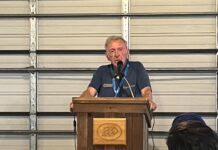
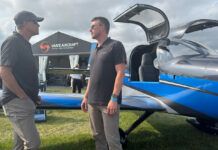
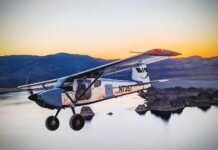

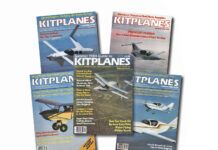

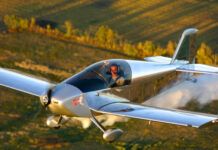

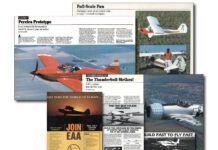
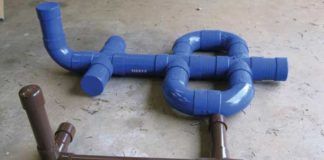
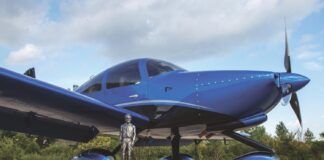
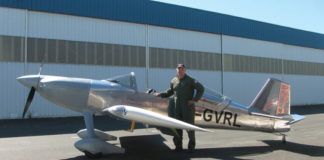
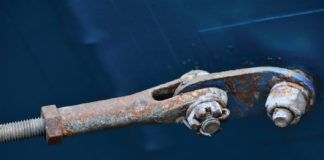
I miss the RVator. The writing was genius. As a 9A builder, I appreciate the affirmation in a world where the number of flying RVs suggests otherwise.
Genius is a bit strong….but I enjoyed the writing and I’m happy if that showed.
Not much beats a light 9A. For 25 years I flew an RV-6 that had the same engine and prop as our company 9A. The 9A was slightly faster, slightly slower, climbed better, carried more and was easier to land. The 6 was quicker and lighter on the controls. I enjoyed them both but have always thought the 9 (especially the 9A) was a better airplane for most pilots. A really good airplane.
I wondered where Ken Scott went. I always enjoyed your writing style reminiscent of Garrison Keillor. I took at least one class from you along with my reluctant wife and always willing son and have enjoyed my RV-7A since 2008.
I’m still around…mostly. Writing for various publications, almost always about aviation in some form. Haven’t achieved Keillor’s status, but enjoy the comparison.
Good to know that class had the desired effect! I hope you continue to enjoy that airplane.
Great read Ken. I remember the early days well. I attended one of the weekend workshops at Vans in the early 90s led by you and Art Chard. It was there I caught the disease and learned a ton. From that point on the RVator kept me motivated and informed. After persisting for many years I finished an RV-8. 1100+ hours and counting.
This article brought back some great memories. I had my first taste of RV flying in 2017 as a thirteen year old kid on a bicycle. I was going around Ken’s neighborhood offering to do all manner of odd jobs in hopes of getting to be around airplanes and those who flew them. Ken took me under his wing (pun intended) and showed me the marvelous world of aviation. To this day, my most pleasant memories are those of flying right seat in N207KS and using all the focus a thirteen year old could muster to maintain altitude in a 360 turn. Eventually I went on to get my pilots license, but none of it would have been possible without Ken Scott and the of aviators of the Willamette Valley. Thank you Ken.
I was on a course led by Ken the weekend after 911, at an airfield near Atlanta, Spalding I think. He was so good I built an RV7 immediately afterwards, on the strength of it. What a wonderful aeroplane! At 92 and in a retirement home I have had to sell it – can’t even drive now!
But loads of memories! (And, Mr Major, A’h say “different from”, not :different than”! but at least it’s better than having to use sign language!)
I built my RV-6 between 1988 and 1994, so Ken was an important part of my RV experience. So was the RVatior…and I’m sure I have every issue from 1988 through the last 90’s. It was exciting being part of the homebuilt community during the late 80’s/early 90’s. The Van’s community was supportive and just simply entertaining to be around.